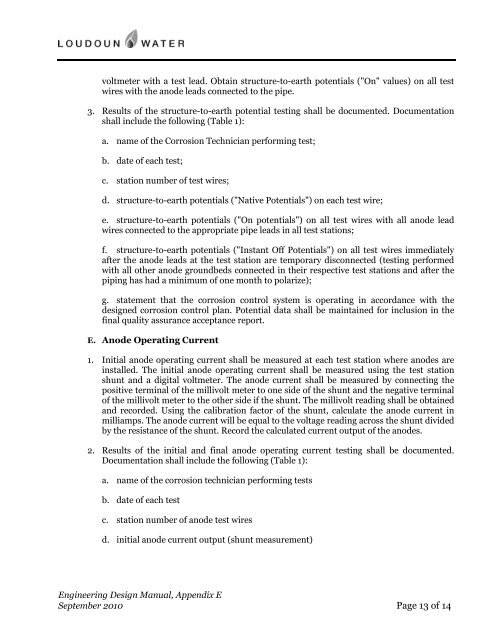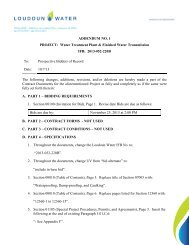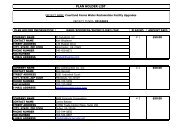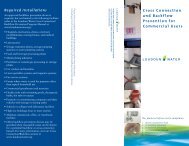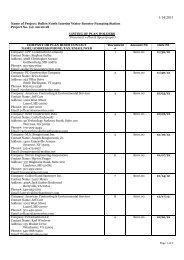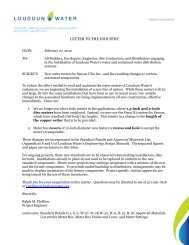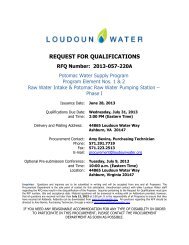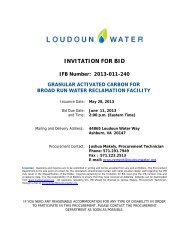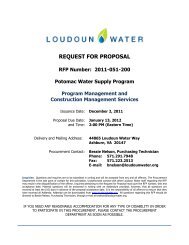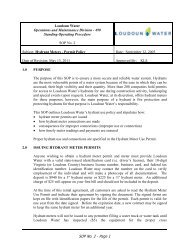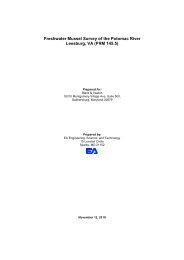Engineering Design Manual - Loudoun Water
Engineering Design Manual - Loudoun Water
Engineering Design Manual - Loudoun Water
Create successful ePaper yourself
Turn your PDF publications into a flip-book with our unique Google optimized e-Paper software.
voltmeter with a test lead. Obtain structure-to-earth potentials ("On" values) on all test<br />
wires with the anode leads connected to the pipe.<br />
3. Results of the structure-to-earth potential testing shall be documented. Documentation<br />
shall include the following (Table 1):<br />
a. name of the Corrosion Technician performing test;<br />
b. date of each test;<br />
c. station number of test wires;<br />
d. structure-to-earth potentials ("Native Potentials") on each test wire;<br />
e. structure-to-earth potentials ("On potentials") on all test wires with all anode lead<br />
wires connected to the appropriate pipe leads in all test stations;<br />
f. structure-to-earth potentials ("Instant Off Potentials") on all test wires immediately<br />
after the anode leads at the test station are temporary disconnected (testing performed<br />
with all other anode groundbeds connected in their respective test stations and after the<br />
piping has had a minimum of one month to polarize);<br />
g. statement that the corrosion control system is operating in accordance with the<br />
designed corrosion control plan. Potential data shall be maintained for inclusion in the<br />
final quality assurance acceptance report.<br />
E. Anode Operating Current<br />
1. Initial anode operating current shall be measured at each test station where anodes are<br />
installed. The initial anode operating current shall be measured using the test station<br />
shunt and a digital voltmeter. The anode current shall be measured by connecting the<br />
positive terminal of the millivolt meter to one side of the shunt and the negative terminal<br />
of the millivolt meter to the other side if the shunt. The millivolt reading shall be obtained<br />
and recorded. Using the calibration factor of the shunt, calculate the anode current in<br />
milliamps. The anode current will be equal to the voltage reading across the shunt divided<br />
by the resistance of the shunt. Record the calculated current output of the anodes.<br />
2. Results of the initial and final anode operating current testing shall be documented.<br />
Documentation shall include the following (Table 1):<br />
a. name of the corrosion technician performing tests<br />
b. date of each test<br />
c. station number of anode test wires<br />
d. initial anode current output (shunt measurement)<br />
<strong>Engineering</strong> <strong>Design</strong> <strong>Manual</strong>, Appendix E<br />
September 2010 Page 13 of 14


